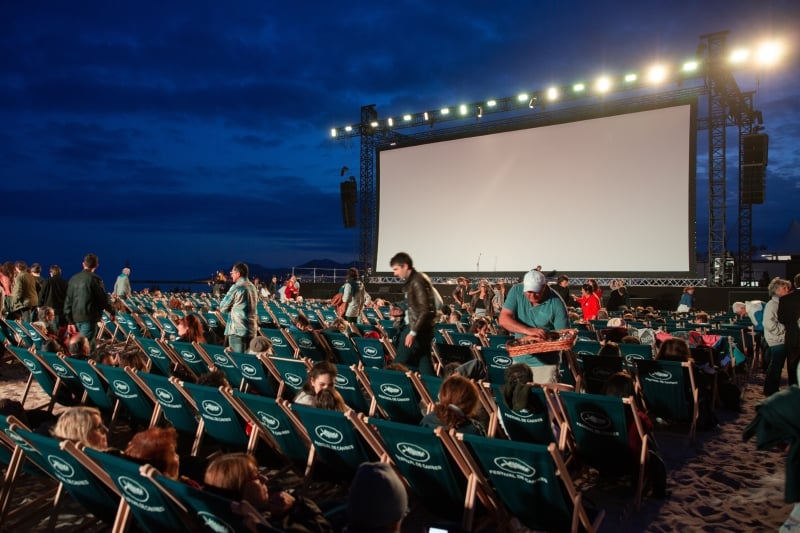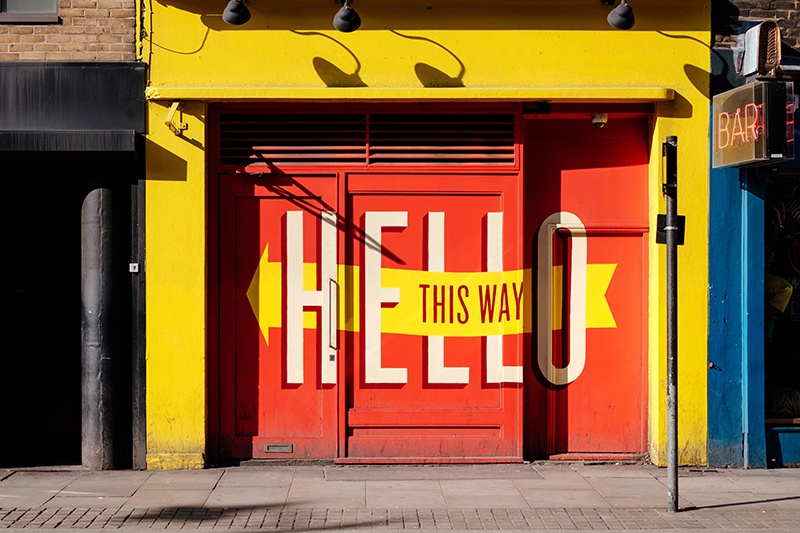This Read section of Speak for Yourself #8 offers three different authentic texts on the theme of cinema. First, read a short history of the world’s most loved cinema snack, popcorn, and learn how it became the perfect partner to a cinema or sofa screening. Next, explore Europe’s best outdoor cinema in a travel article that is rich in descriptive language. Lastly, take time for a long read from BBC Travel. This is the beautiful story of Yan Jhen-Fa, an artist who has spent almost 50 years painting film posters for the Chin Men Theatre in Tainan, Taiwan. Explore the story through text, video and a gallery of his incredible artwork.
1. Why do we eat popcorn in the cinema?
(453 words)
“Popcorn is something we can’t imagine watching a movie without” - Wil, English Live blogger
Watching a film with a bowl of popcorn - it’s an activity so common that we never stop to think about why we do it. But popcorn and movies have an interesting history and today that cheap snack is big business for cinemas and food providers.
This short article from English First gives a brief history of the world’s most famous cinema snack. The text explains how popcorn moved from being a street food into the movie theatre and why it was a win-win choice for cinema owners and audiences.

STRATEGY:
One by one, read the questions and find the answers in the text.
After reading, you should have a general understanding of the whole text. Go back and use a dictionary to check any new vocabulary.
1. Where could you buy popcorn in the 1800s?
2. Describe going to the movies in the 1900s. What was it like and who were the audience?
3. What changes happened in the late 1920s?
4. What were the advantages of popcorn for the cinema owner and for the audience?
2. Europe’s Most Glorious Outdoor Cinemas
(1189 words)
“Superb settings under the stars” - Meeroona, Travel Away Blogger
With smart phones these days, you can carry around a library of films in your pocket, ready to watch wherever and whenever you want. But nothing really compares to watching films on the big screen, especially if that screen is outdoors.
Outdoor cinemas started in Germany around 1916 at the same time drive-in movie theatres started in the USA. Today, all around the world you can find opportunities for outdoor screenings and film festivals, often in unique settings with actors or live musicians performing with the film. Here at Speak, we even presented our own Cinema Under the Stars event last summer as part of the varied and exciting programme at our Speak Teens English Summer Camp.
From rooftops in London to gardens in Santorini, this article offers an exciting tour of the best outdoor cinemas in Europe.

STRATEGY:
The writer describes each location in rich detail, so this article is a great opportunity to expand your vocabulary.
STEP 1
Read the first few 3 locations and decide which location sounds the most exciting for you: Bologna, Barcelona or Paris? Why?
STEP 2
Now, let’s explore the vocabulary in more detail.
Read the description of Cineteca di Bologna again, and notice how the author uses three groups of vocabulary:
Adjectives: These describing words make the location and event sound exciting:
Huge, Grandiose, Spectacular, Valuable
Compound Adjectives: This is an adjective made from two parts:
Long-established, Open-air
Cinema Vocabulary: The text is rich in cinema vocabulary and synonyms:
Film, projected, huge screen, movie venue, collection, black-and-white classics
STEP 3
Now, it’s your turn to read the text actively. Read about each outdoor cinema location and identify the adjectives, compound adjectives and cinema vocabulary you find in each description.
STEP 4
Check your notes against our free Vocabulary pdf (below) where we have recorded the vocabulary we think can boost your English. Use a dictionary to translate any vocabulary you do not understand.
Now, find opportunities to use the language in your real life.
3. The Last Film Poster Painter of Taiwan
(1800 Words and 2:11 video)
“I’ll paint until I can no longer see” - Yan Jhen-Fa, film poster artist
Like the thousands of movie heroes he has painted for decades, Jhen-Fa is skilled, dedicated and in a race against time. Taiwan’s oldest and most famous film poster painter is losing his eyesight and so is on a mission - to pass on his skills and knowledge to a group of students before it’s too late.
This BBC Travel article blends Jhen-Fa’s personal biography with the history of Taiwan’s film industry. It is written beautifully by travel writer Eliot Stein who has included video and a stunning photo gallery of Jhen-Fa’s artwork.
It’s a long read, so you don’t try and read it all at once. Think of the article as a short story that you can read over time.

STRATEGY
Step 1:
Imagine each page is a chapter in a short story. Before you read the story, look at chapter titles below and try to guess what will happen in Yan Jhen-Fa’s story:
Larger than life Italian
A dying art
The magic of the movies
A Tainan landmark
Still portraits for motion pictures
High praise
Labour of love
Out of sight
A homeless apprentice
Master class
An anonymous artist
Step 2:
Now, read the story and watch the video. A key element of the writing is the rich descriptions Stein uses. He uses interesting verb phrases and adjectives to build a clear picture of Yan Jhen-Fa’s life and craft:
"Yan toiled away in the sweltering heat"
"Shy and softly spoken, Yan has always worked alone"
"With each sweeping stroke, the slight man with eyeglasses began filling the giant canvas"
"Yan pours himself into each painting"
"For many years, the paint-speckled artist went unrecognised and unnoticed"
"Yan continues to fight his lonely battle against digital printing one brushstroke at a time"
As you read, take notes about the phrases and vocabulary you discover, but remember, it’s not important to understand every single word.
Step 3:
Reading is an essential part of language learning. For many learners it’s a way to discover new language safely, away from colleagues or clients. If you enjoyed this article, read more of Eliot Stein’s adventures at his travel and culture blog and of course, put all this new language into practice by joining us on an immersive Speak programme too!










